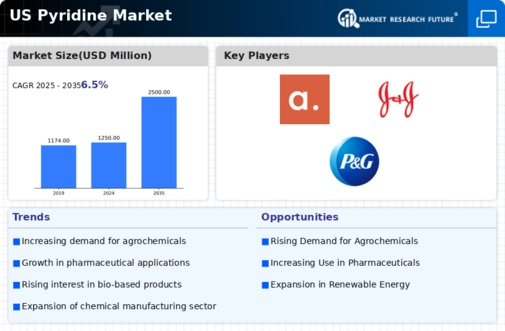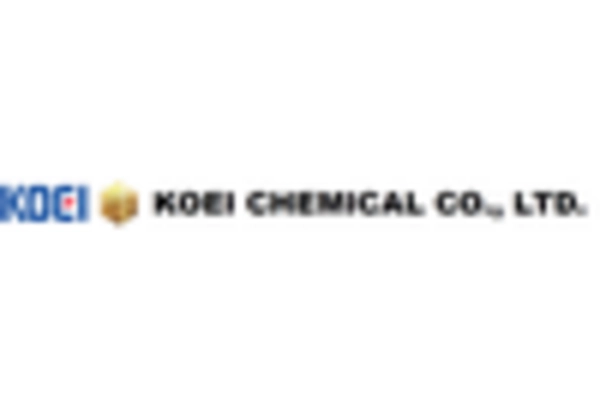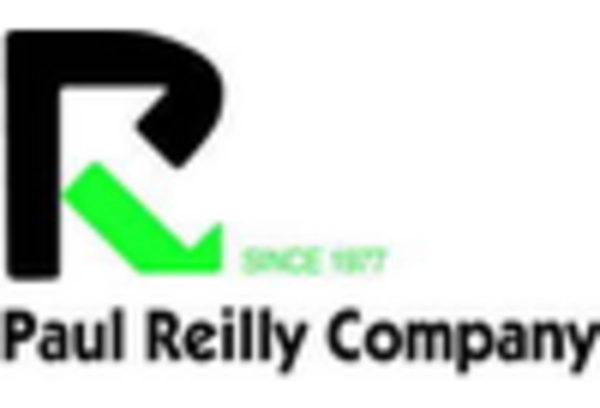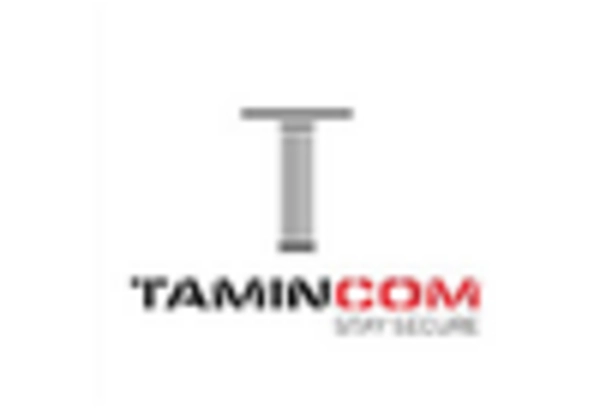Expansion of End-User Industries
The expansion of end-user industries is a critical driver for the pyridine market. Key sectors such as agriculture, pharmaceuticals, and automotive are experiencing robust growth, which in turn fuels the demand for pyridine. The agricultural sector, in particular, is witnessing an increase in the use of pyridine-based products for crop protection and yield enhancement. Additionally, the pharmaceutical industry continues to expand, with pyridine derivatives being integral to the development of new medications. In 2025, the combined growth of these end-user industries is expected to contribute to a market value of approximately $1.8 billion for pyridine. This expansion indicates a strong correlation between the growth of end-user industries and the demand for pyridine, highlighting its importance in the pyridine market.
Growth in Industrial Applications
The pyridine market is experiencing notable growth due to its increasing utilization in various industrial applications. Pyridine serves as a vital solvent and reagent in the production of agrochemicals, pharmaceuticals, and rubber chemicals. The demand for pyridine in the agrochemical sector is particularly pronounced, as it is a key ingredient in herbicides and pesticides. In 2025, the market for pyridine in industrial applications is projected to reach approximately $1.5 billion, reflecting a compound annual growth rate (CAGR) of around 5%. This growth is driven by the rising need for effective agricultural solutions and the expansion of the pharmaceutical industry, which relies on pyridine derivatives for drug synthesis. Consequently, the industrial applications of pyridine are a significant driver for the pyridine market.
Rising Demand for Specialty Chemicals
The pyridine market is significantly influenced by the rising demand for specialty chemicals across various sectors. Specialty chemicals, which include agrochemicals, pharmaceuticals, and food additives, are increasingly sought after for their specific performance characteristics. Pyridine, being a versatile building block, is essential in the synthesis of these specialty chemicals. In 2025, the specialty chemicals segment is expected to account for over 30% of the total pyridine market revenue, driven by the growing need for high-performance products in industries such as agriculture and healthcare. This trend indicates a shift towards more specialized applications, which could lead to increased investment in pyridine production and innovation. The demand for specialty chemicals thus serves as a vital driver for the pyridine market.
Technological Advancements in Synthesis
Technological advancements in the synthesis of pyridine are emerging as a key driver for the pyridine market. Innovations in production methods, such as catalytic processes and green chemistry approaches, are enhancing the efficiency and sustainability of pyridine manufacturing. These advancements not only reduce production costs but also minimize environmental impact, aligning with the increasing regulatory focus on sustainability. As companies adopt these new technologies, the overall supply of pyridine is likely to increase, meeting the growing demand from various sectors. In 2025, it is anticipated that the adoption of advanced synthesis technologies could lead to a 10% reduction in production costs, thereby making pyridine more accessible to manufacturers. Consequently, technological advancements in synthesis are poised to significantly influence the pyridine market.
Regulatory Support for Chemical Innovations
Regulatory frameworks in the US are increasingly supportive of chemical innovations, which positively impacts the pyridine market. The Environmental Protection Agency (EPA) has implemented guidelines that encourage the development of safer and more efficient chemical processes. This regulatory support fosters research and development in the production of pyridine and its derivatives, leading to enhanced efficiency and reduced environmental impact. As a result, companies are more inclined to invest in pyridine production technologies, which could potentially increase market supply. Furthermore, the emphasis on sustainable practices aligns with the growing consumer demand for eco-friendly products, thereby creating new opportunities for pyridine applications. The regulatory landscape thus plays a crucial role in shaping the future of the pyridine market.

















Leave a Comment